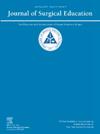了解项目主任和核心教师在外科专业的时间投入
IF 2.1
3区 医学
Q1 EDUCATION, SCIENTIFIC DISCIPLINES
引用次数: 0
摘要
在过去的十年里,外科训练有了很大的发展。项目主任(pd)和外科教师都必须适应新的培训模式和外科技术的创新,同时平衡住院医师教育和行政职责。本研究的目的是检视医师和核心教员在外科住院医师教育任务中的时间分配。方法数据收集自2011-2012学年至2022-2023学年公开发布的美国研究生医学教育认证委员会(ACGME)年度报告。博士和核心教员每周的总工作时间被划分为行政时间、临床任务、研究和教学或教学。我们检查了9个不同的外科专科。分析中只包括住院医师项目。使用线性回归分析来检查随时间变化的趋势。结果在12年的研究期间,博士报告的平均工作时间为50.6 小时/周,核心教师报告的工作时间为36.2 小时/周。在PDs,最高的专业每周工作时间每周包括心胸外科手术(61.4 ±6.0 小时),神经外科(55.6 ±3.9 小时),和整形手术(53.7 ± 3.7小时)。大部分PD时间(55.0%)用于临床任务,另外26.1%用于管理任务,10.3%用于教学。在趋势分析中,9个外科专科中有6个的博士报告在行政任务上花费的时间显著增加(p <; 0.05),9个专科中有8个报告教学时间减少(p <; 0.05)。核心教员的专业最高的每周工作时间每周包括心胸外科手术(42.6 ±7.8 小时),神经外科(41.7 ±4.7 小时),和血管手术(39.6 ± 6.4小时)。核心教员的大部分工作时间是临床工作(67.8%),另有10.9%用于研究,10.4%用于行政工作。趋势分析显示,9个专业中有7个专业的核心教师在临床任务上花费的时间有所增加(p <; 0.05),所有9个专业在行政任务上花费的时间都有所减少(p <; 0.05)。结论不同外科专业的专科医生和核心教师在临床、管理、研究和住院医师教育等方面的责任平衡。在过去的十年中,外科医师报告了行政职责增加的趋势,而在住院医师教育和教学上花费的时间减少。在同一时期,核心外科教师将更多的时间用于临床工作,而较少的时间用于管理任务。这些发现对外科住院医师的教育具有重要意义,需要进一步的工作来了解这些趋势的影响因素和后果。本文章由计算机程序翻译,如有差异,请以英文原文为准。
Understanding the Time Investment of Program Directors and Core Faculty in Surgical Specialties
Background
Surgical training has evolved considerably over the past decade. Both program directors (PDs) and surgical faculty have had to adapt to novel training paradigms and innovations in surgical techniques, while balancing resident education with administrative duties. The purpose of this study is to examine the time allotment of PDs and core faculty to the educational mission of surgical residency programs.
Methods
Data was collected from publicly available Accreditation Council for Graduate Medical Education (ACGME) annual reports from academic years 2011-2012 to 2022-2023. Total weekly hours for PDs and core faculty were categorized into administrative time, clinical duties, research, and teaching or didactics. Nine different surgical specialties were examined. Only residency programs were included in analysis. Linear regression analysis was utilized to examine trends over time.
Results
Over the twelve-year study period, PDs reported working a mean of 50.6 hrs/week and core faculty reported 36.2 hrs/week. Among PDs, the specialties with the highest weekly hours worked per week included cardiothoracic surgery (61.4 ± 6.0 hrs), neurosurgery (55.6 ± 3.9 hrs), and plastic surgery (53.7 ± 3.7 hrs). The majority of PD time (55.0%) was spent on clinical duties, with an additional 26.1% spent on administrative tasks, and 10.3% on teaching. On trend analysis, PDs in six of nine surgical specialties reported a significant increase in time spent on administrative tasks (p < 0.05 each), and eight of nine specialties reported a decline in teaching time (p < 0.05 each). For core faculty members, the specialties with the highest weekly hours worked per week included cardiothoracic surgery (42.6 ± 7.8 hrs), neurosurgery (41.7 ± 4.7 hrs), and vascular surgery (39.6 ± 6.4 hrs). Clinical duties occupied the majority of working time (67.8%) for core faculty, with an additional 10.9% spent on research, and 10.4% dedicated to administrative duties. Core faculty in seven of nine specialties reported an increase in time spent on clinical duties (p < 0.05 each) on trend analysis, and all nine specialties reported less time spent on administrative tasks (p < 0.05 each).
Conclusion
PDs and core faculty within different surgical specialties balance multiple responsibilities including clinical duties, administrative tasks, research, and resident education. Over the past decade, surgical PDs have reported a trend of increasing administrative duties while spending less time on resident education and didactics. Over that same period core surgical facultyhave dedicated more time to clinical duties and less time towards administrative tasks. These findings have important implications on surgical resident education, and further work is needed to understand the contributing factors and consequences of these trends.
求助全文
通过发布文献求助,成功后即可免费获取论文全文。
去求助
来源期刊

Journal of Surgical Education
EDUCATION, SCIENTIFIC DISCIPLINES-SURGERY
CiteScore
5.60
自引率
10.30%
发文量
261
审稿时长
48 days
期刊介绍:
The Journal of Surgical Education (JSE) is dedicated to advancing the field of surgical education through original research. The journal publishes research articles in all surgical disciplines on topics relative to the education of surgical students, residents, and fellows, as well as practicing surgeons. Our readers look to JSE for timely, innovative research findings from the international surgical education community. As the official journal of the Association of Program Directors in Surgery (APDS), JSE publishes the proceedings of the annual APDS meeting held during Surgery Education Week.
 求助内容:
求助内容: 应助结果提醒方式:
应助结果提醒方式:


